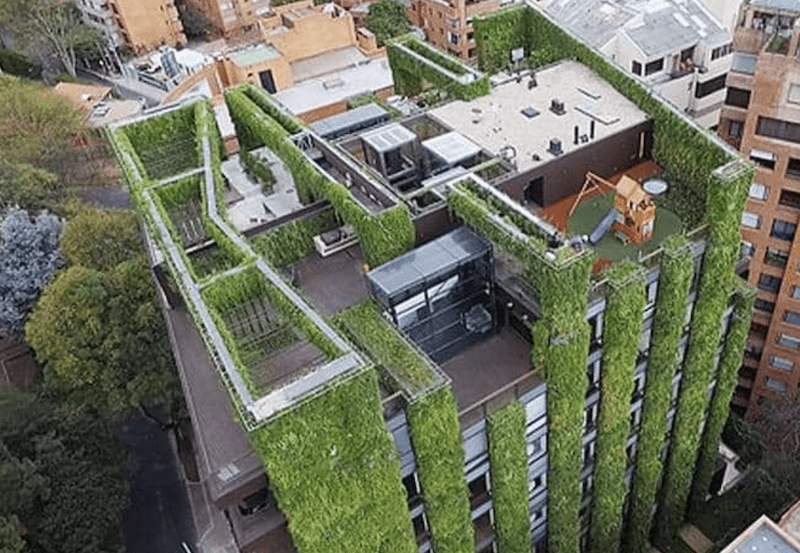Experts in the emerging field of biophilic design are finding that people need regular contact with nature to be happy and well-rounded.
And for those who live and work in cities, concrete and glass towers, smog and noise can significantly and negatively affect well-being.
Urban areas are expected to accommodate 60% of the world’s people by 2030, and one in three people will live in cities with a population of at least half a million.
So here’s the question and the opportunity for us: When there is so much property available in urban centers to park, how can a developer bring in more of the environment with a biophilic design?

Combine buildings and nature with vertical gardens
Building designers are answering biophilic design’s call to action by creating vertical gardens.
Also called living walls or green walls, vertical gardens are free-standing gardens installed on the sides of buildings to provide swaths of green space in urban areas.
Vertical gardens can be attached to almost any vertical structure and can be used as free-standing space dividers, providing aesthetics, sound insulation and security.
Plants can also be used to reduce noise along roads and highways, as living green walls block out high-frequency sounds.
While the supporting structure can help reduce low frequency noise.

Vertical gardens are beneficial to community health
Potential tenants – whether multi-family or commercial – love vertical gardens, which makes them profitable for developers and building users.
Vertical gardens provide refreshing visual breaks from concrete and steel concentrations, and the benefits go much deeper.
Vertical gardens have a profound impact on air quality, especially in mitigating humidity and controlling dust both indoors and outdoors.
Green walls absorb noise pollution and create micro-climates that increase heat efficiency.
They have the added benefit of creating urban ecosystems that attract insects and birds, which positively impacts biodiversity.
In some cases, vertical gardens contribute to a larger ecosystem, in fact,
Vertical gardening takes more of a regenerative design philosophy from a design CO point of view.
Plants are natural filters – they take carbon dioxide out of the air and replace it with much-needed oxygen.
They also help filter pollutants from the air, literally helping city dwellers breathe easier.
According to Hanging Gardens, a vertical garden designer in New Zealand,
Auckland Council estimated the social cost of air pollution to the city at $1.07 billion.
Moreover, studies show that on city streets surrounded by buildings,
Careful placement of plants reduced nitrogen dioxide concentrations by up to 40% and particulate matter by up to 605%.
These statistics can be powerfully persuasive during design review meetings and entitlements.
Then there are the psychological benefits, the cumulative body of evidence from more than a decade of research on the relationship between people and nature proves
Plant contact is extremely beneficial to human health and well-being.
Whether contact with vegetation is active (gardening) or passive (viewing vegetation through a window),
The results show a consistent pattern of positive effects including:
Reducing psychological and physiological stress
More positive mood
Increased ability to refocus attention
Restore the mind and reduce mental fatigue
Improve performance on cognitive tasks
Decreased perception of pain and faster recovery in healthcare settings
Vertical gardening also brings operational benefits. One of the biggest benefits of vertical gardening is its ability to manage water.
Vertical gardens make the need for watering very efficient, as the process is managed using a drip irrigation system or hydroponics system.
The wastewater is collected at the bottom of the garden and either drained or reused.
While vertical gardening has undeniable benefits for developers and building users,
However, they can be difficult to design and maintain if not properly planned and installed.
It is critical to combine the appropriate system and plant design and maintenance strategy
So that the green wall can serve the project in the long term, as the planning and investment is worth it.
Smart architecture and smart cities in making cities more sustainable and smart









